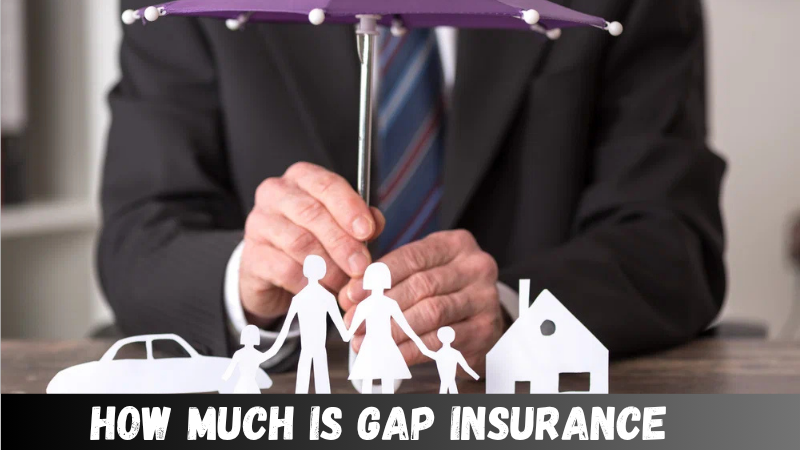Introduction
If you’ve recently financed or leased a vehicle, you’ve probably heard of GAP insurance. But many drivers still wonder, how much is gap insurance, and is it really worth the cost? In this detailed guide, we’ll break down the average prices, where you can buy it, and what factors affect the cost—so you can make an informed financial decision.
What Is GAP Insurance?
Before diving into how much is gap insurance, it’s important to understand what it actually covers. GAP stands for Guaranteed Asset Protection, and it fills the financial “gap” between what your car is worth and what you still owe on your auto loan or lease.
For example, if your car is totaled in an accident and your insurance company pays out $18,000—but you still owe $22,000—GAP insurance covers that $4,000 difference. Without it, you’d be paying that out of pocket.
How Much Is GAP Insurance in 2025?
So, how much is gap insurance in 2025? On average:
- From dealerships: $400–$800 (one-time fee added to financing)
- From auto insurers: $20–$40 per year as an add-on to your comprehensive/collision coverage
- From third-party providers: $200–$400 (one-time fee or annual premium)
As you can see, the cost can vary widely depending on where you purchase it. Generally, buying GAP insurance through your auto insurance provider is the most affordable option.
Factors That Affect the Cost
Several factors can influence including:
1. Vehicle Type and Value
Higher-value vehicles or luxury models tend to increase the cost of GAP insurance, since the gap between depreciation and the loan balance may be greater.
2. Loan or Lease Terms
Longer loan terms and smaller down payments usually lead to higher GAP insurance rates because you owe more than the car is worth for a longer period.
3. Your Location
Insurance rates vary by state. Where you live can impact how much is gap insurance, especially if your area has high accident or theft rates.
4. Where You Buy It
As mentioned, dealerships tend to charge more—often rolling the cost into your financing, which means you’ll also pay interest on it. Buying from your auto insurer or a third-party provider is typically cheaper.

Is GAP Insurance Worth the Cost?
While not mandatory, GAP insurance is often highly recommended if:
- You put less than 20% down on your car
- You financed for 60 months or more
- You leased your vehicle
- Your car depreciates quickly (as many do)
- You drive a lot and put high mileage on your car
Considering how much is gap insurance—which is relatively low compared to the potential savings—many drivers find it to be a smart financial decision.
Where to Buy?
If you’re ready to buy, you have several options:
- Dealership – Offers convenience, but usually at a higher cost
- Auto insurance company – Often the cheapest and most flexible option
- Credit unions or banks – May offer competitive prices for members
- Third-party online providers – Great for comparison shopping
It’s always wise to compare quotes and read the fine print before committin
How to Lower the Cost
If you’re looking to reduce how much is gap insurance, consider the following tips:
- Ask your insurer to bundle GAP with your current policy
- Avoid buying it from the dealership unless you negotiate a discount
- Pay upfront instead of financing it with your loan
- Check if your lease includes it—many do automatically
By exploring different providers and options, you can ensure you’re getting the best value.
Why Vehicle Depreciation Matters for Loan Protection
One important aspect to consider when evaluating this type of coverage is the rapid depreciation of new vehicles. Most cars lose a significant portion of their value within the first few years, especially luxury models and high-mileage vehicles. This drop in value can leave drivers financially exposed if an accident or theft occurs early in the loan or lease period. Having the right protection in place ensures you’re not left paying thousands out of pocket for a vehicle you no longer possess.
Understanding Policy Terms and Hidden Limitations
Additionally, it’s crucial to review the terms and limitations of your policy carefully. Some providers may have restrictions based on mileage, vehicle age, or the total loan amount. Others might include coverage automatically in certain lease agreements, eliminating the need for an additional purchase. Being informed about the specifics of your policy can save you money and prevent surprises during a claim process.
Financial Flexibility for Frequent Car Upgrades
For those who frequently trade in or upgrade their vehicles, this type of optional coverage can also provide extra flexibility and financial peace of mind. It allows drivers to navigate transitions between vehicles without the stress of unexpected loan balances. Whether you’re upgrading to a new model or switching to a lease, this protection ensures that your finances stay on track, even if the unexpected happens.
Conclusion
To sum it up, how much is gap insurance depends on several factors, but it’s typically an affordable way to protect yourself from a costly financial gap in case your car is totaled or stolen. Whether you buy it through your insurer, a dealer, or a third party, the peace of mind it offers is often well worth the price
FAQ:
Q1: What is the average cost of GAP insurance in 2025?
A: On average, GAP insurance costs $20–$40 per year from an insurer or $400–$800 one-time from a dealership.
Q2: Is GAP insurance required by law?
A: No, it’s not required by law, but many lenders and leasing companies strongly recommend it.
Q3: Can I cancel GAP insurance after paying off my loan?
A: Yes. Once the loan is paid off or you owe less than the car’s value, you can cancel GAP coverage.
Q4: Is GAP insurance included in my regular auto insurance policy?
A: Typically not. It’s an optional add-on, so you’ll need to request it from your provider.
Q5: Is it cheaper to buy GAP insurance through a dealership or insurer?
A: Buying through an insurer or third party is usually cheaper than purchasing through a dealership.
You may also read this :Projection Mapping Art: Transforming Surfaces Into Living Canvases
